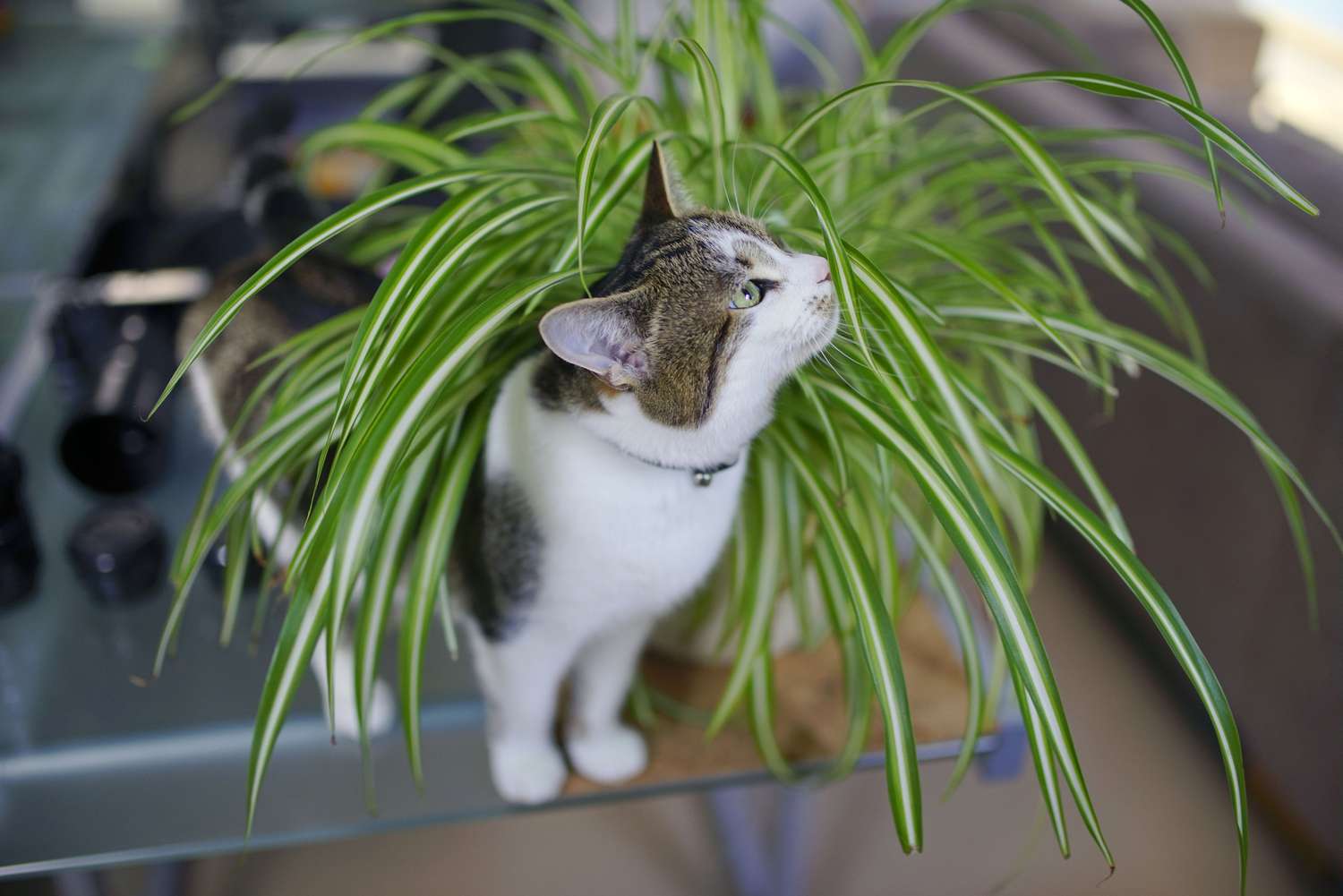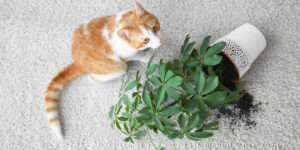
Are Spider Plants Poisonous to Cats? A Comprehensive Guide
Spider plants (Chlorophytum comosum) are among the most popular houseplants, known for their attractive foliage and ease of care. They are often chosen by pet owners due to their non-toxic nature. However, many cat owners still wonder if these plants are safe for their feline friends. This article delves into the relationship between spider plants and cats, exploring their toxicity, effects on cats, and how to manage their presence in homes with pets.
Understanding Spider Plants
Spider plants are perennial plants that are native to tropical and southern Africa. They are characterized by their long, arching leaves that can grow up to 12-18 inches in length. The plant produces small white flowers that eventually develop into “pups” or “spiderettes,” which can be propagated easily. Spider plants are known for their air-purifying qualities, making them a popular choice for indoor environments.
Are Spider Plants Toxic to Cats?
According to the ASPCA and various other sources, spider plants are non-toxic to cats. This means that if a cat ingests a spider plant, it is unlikely to cause serious harm. However, while they are considered safe, there are some important considerations to keep in mind.
Mild Gastrointestinal Upset
Although spider plants are non-toxic, they can still cause mild gastrointestinal upset if ingested in large quantities. Symptoms may include:
- Vomiting
- Diarrhea
- Upset stomach
These symptoms are generally not severe and are usually self-limiting. However, if a cat consumes a large amount of the plant, it is advisable to monitor their behavior and consult a veterinarian if any concerning symptoms arise.
Why Are Cats Attracted to Spider Plants?
Cats are naturally curious creatures and are often drawn to plants for several reasons:
- Mild Hallucinogenic Properties: Spider plants contain compounds that can have a mild hallucinogenic effect on cats, similar to catnip. This may explain why cats are often seen nibbling on the leaves or batting at the dangling spiderettes.
- Texture and Movement: The long, flowing leaves of spider plants may resemble toys to a cat, making them enticing for play.
- Nutritional Instinct: Cats may nibble on plants as a way to aid digestion or settle an upset stomach. In the absence of outdoor grass, spider plants may serve as an alternative.
How to Manage Spider Plants in a Cat-Friendly Home
While spider plants are safe for cats, it is still wise to take precautions to prevent excessive nibbling. Here are some strategies to keep your spider plants safe:
- Placement: Position spider plants out of reach of your cat. Hanging planters or high shelves can help keep these plants safe from curious paws.
- Provide Alternatives: If your cat enjoys nibbling on plants, consider providing cat grass or catnip as a healthier alternative. This can satisfy their urge to graze without harming your spider plants.
- Use Repellents: If your cat is persistent, consider using a bitter-tasting spray on the leaves of the spider plant. This can deter them from chewing on the foliage.
- Monitor Plant Health: Regularly check your spider plants for any signs of stress or damage caused by nibbling. Prune any damaged leaves to promote healthy growth.
Other Safe Houseplants for Cats
If you are looking for additional houseplants that are safe for cats, consider the following options:
- Boston Fern (Nephrolepis exaltata): A lush, non-toxic plant that thrives in humid environments.
- Areca Palm (Dypsis lutescens): A popular indoor palm that is safe for pets and adds a tropical touch.
- Bamboo Palm (Chamaedorea seifrizii): An attractive palm that is also non-toxic to cats and dogs.
- Parlor Palm (Chamaedorea elegans): A small palm that is easy to care for and safe for pets.
Conclusion
Spider plants are a wonderful addition to any home, especially for those with cats. They are non-toxic and can even provide some mild stimulation for curious felines. However, it is always best to monitor your pet’s interactions with plants and take necessary precautions to ensure their safety. By providing alternative grazing options and positioning your spider plants thoughtfully, you can enjoy the beauty of these plants without compromising your cat’s health.
FAQ
- Are spider plants toxic to cats?
- No, spider plants are considered non-toxic to cats according to the ASPCA.
- What happens if a cat eats a spider plant?
- If a cat eats a spider plant, it may experience mild gastrointestinal upset, such as vomiting or diarrhea, but serious illness is unlikely.
- Why do cats like spider plants?
- Cats are attracted to spider plants due to their mild hallucinogenic properties, texture, and movement, which can resemble toys.
- How can I prevent my cat from eating my spider plant?
- Keep the plant out of reach, provide alternative grazing options like cat grass, and consider using bitter-tasting sprays on the leaves.
- What other houseplants are safe for cats?
- Some safe houseplants include Boston ferns, Areca palms, Bamboo palms, and Parlor palms.
Table of Spider Plant Information
| Common Name | Scientific Name | Toxicity to Cats | Symptoms of Ingestion | Safe Alternatives | Wikipedia/Gov Link |
|---|---|---|---|---|---|
| Spider Plant | Chlorophytum comosum | Non-toxic | Mild gastrointestinal upset | Cat grass, catnip | Spider Plant |
In summary, spider plants are not only a safe choice for homes with cats but also contribute positively to indoor air quality and aesthetics. By understanding their effects and managing their presence, you can create a harmonious environment for both your plants and your pets.


